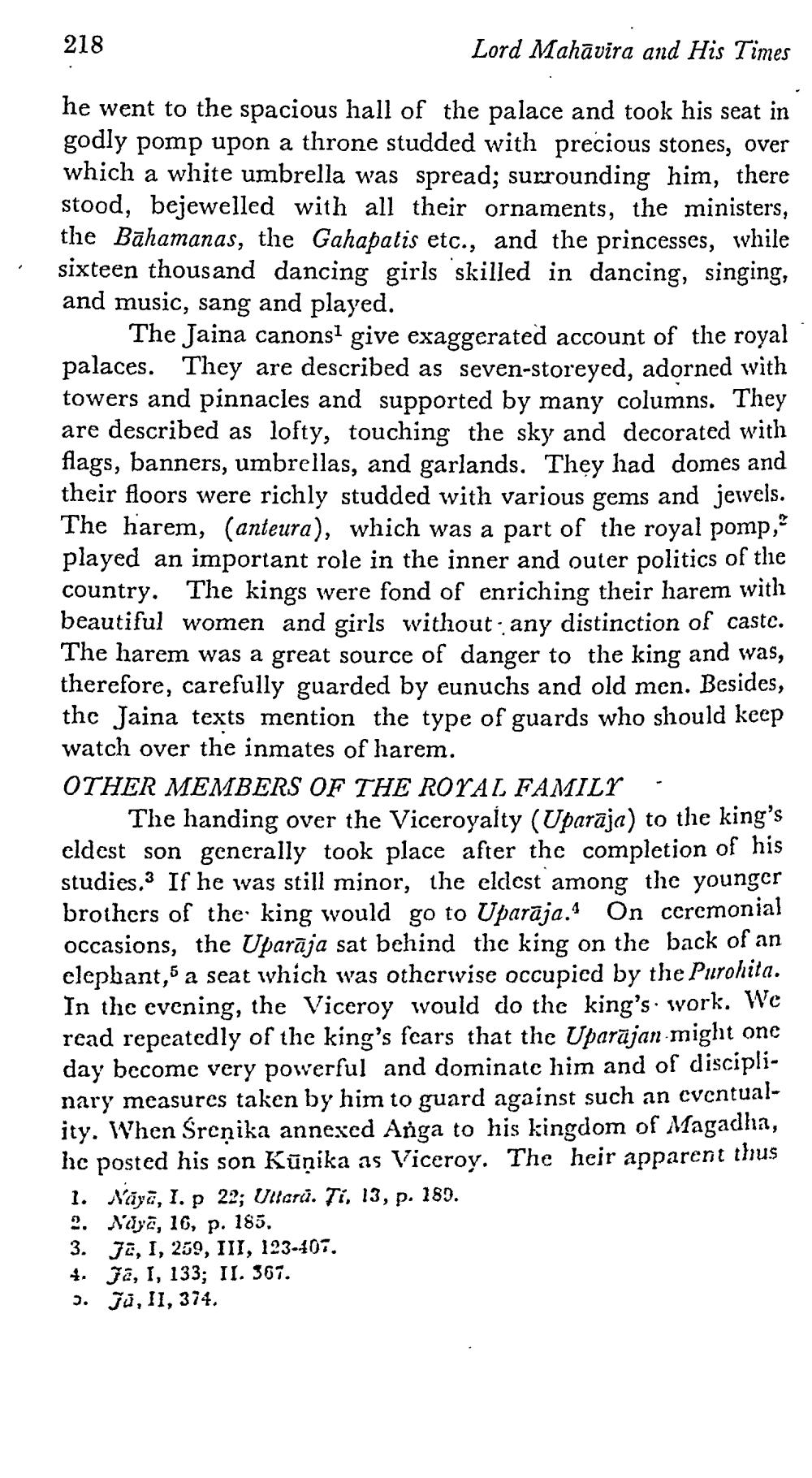________________
218
Lord Mahavira and His Times
he went to the spacious hall of the palace and took his seat in godly pomp upon a throne studded with precious stones, over which a white umbrella was spread; surrounding him, there stood, bejewelled with all their ornaments, the ministers, the Bāhamanas, the Gahapatis etc., and the princesses, while sixteen thousand dancing girls 'skilled in dancing, singing, and music, sang and played.
The Jaina canonst give exaggerated account of the royal palaces. They are described as seven-storeyed, adorned with towers and pinnacles and supported by many columns. They are described as lofty, touching the sky and decorated with flags, banners, umbrellas, and garlands. They had domes and their floors were richly studded with various gems and jewels. The harem, (anteura), which was a part of the royal pomp, played an important role in the inner and outer politics of the country. The kings were fond of enriching their harem with beautiful women and girls without any distinction of caste. The harem was a great source of danger to the king and was, therefore, carefully guarded by eunuchs and old men. Besides, the Jaina texts mention the type of guards who should keep watch over the inmates of harem. OTHER MEMBERS OF THE ROYAL FAMILY
The handing over the Viceroyalty (Uparāja) to the king's eldest son generally took place after the completion of his studies.3 If he was still minor, the eldest among the younger brothers of the king would go to Uparāja. On ceremonial occasions, the Uparāja sat behind the king on the back of an elephant,5 a seat which was otherwise occupied by the Purohita. In the evening, the Viceroy would do the king's work. Wc read repeatedly of the king's fears that the Uparājan-might onc day become very powerful and dominate him and of disciplinary measures taken by him to guard against such an cvcntuality. When Śreņika annexed Anga to his kingdom of Magadha, hc posted his son Kūņika as Viceroy. The heir apparent thus 1. Naya, I. p 22; Ullarů. Tí, 13, p. 180. 2. Naya, 16, p. 185. 3. J2, 1, 259, III, 123-107. 4. Ja, I, 133; II. 367. 3. Jü, 11, 374.




